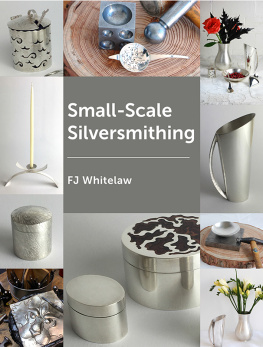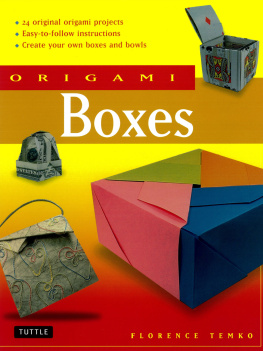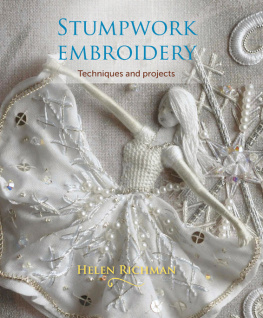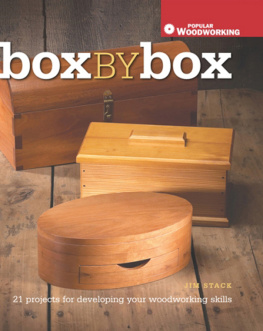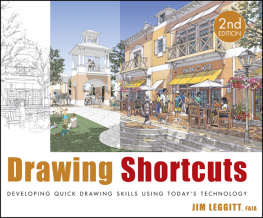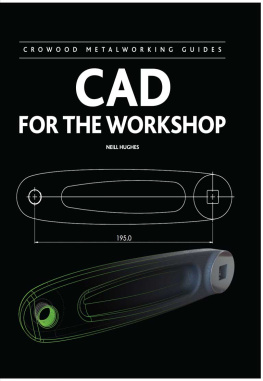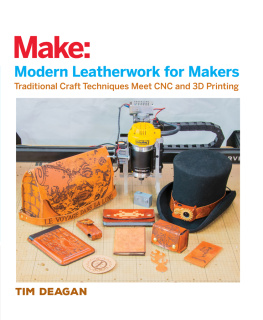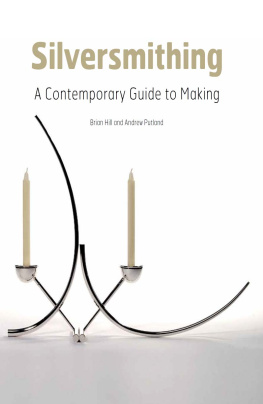Page List
Small-Scale
Silversmithing
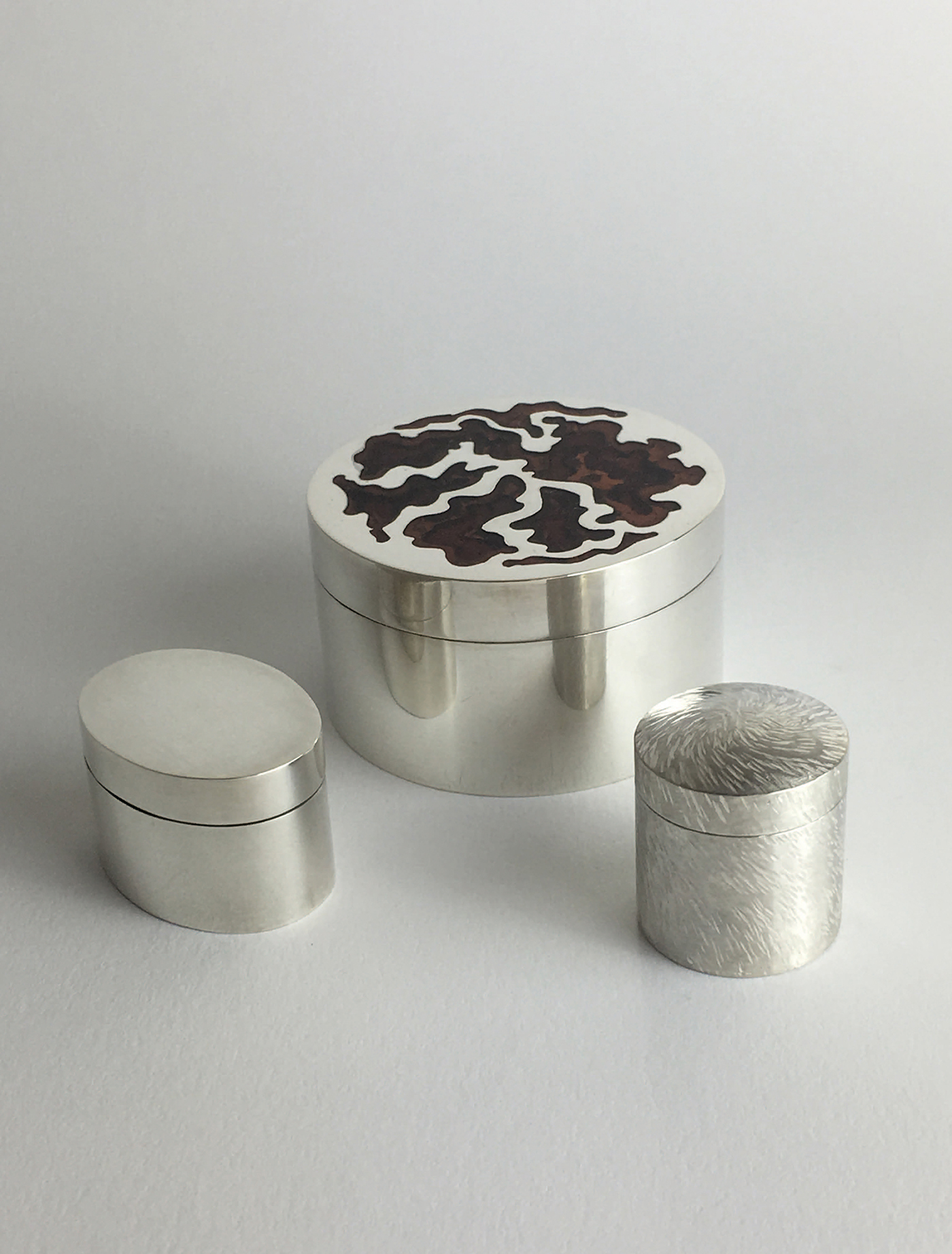
Small-Scale Silversmithing
FJ Whitelaw

First published in 2019 by
The Crowood Press Ltd
Ramsbury, Marlborough
Wiltshire SN8 2HR
This e-book first published in 2019
www.crowood.com
F.J. Whitelaw 2019
All rights reserved. This e-book is copyright material and must not be copied, reproduced, transferred, distributed, leased, licensed or publicly performed or used in any way except as specifically permitted in writing by the publishers, as allowed under the terms and conditions under which it was purchased or as strictly permitted by applicable copyright law. Any unauthorised distribution or use of this text may be a direct infringement of the authors and publishers rights, and those responsible may be liable in law accordingly.
British Library Cataloguing-in-Publication Data
A catalogue record for this book is available from the British Library.
ISBN 978 1 78500 618 0
Introduction
S ilversmithing is the practice of creating objects in silver other than jewellery. Traditional silversmithing has evolved over a long period of time but at its core, it is the manipulation of metal to create objects of use, importance and beauty.
The history of precious metal artefacts includes many types of objects from the most grandiose trophies and ecclesiastical treasures to the smallest snuffbox or salt spoon. Many surviving examples of historical pieces are not just large statements of wealth and status but are more personal, portable treasures. These small items do not hold a place of lesser significance in the history of silverwares but are objects intended for the domestic setting, both for use and to announce the excellent taste of the fortunate owner. There is also a particular category of small silversmithing referred to as objects of virtue which are small but perfectly formed examples of exquisite craftsmanship, made using the combined skills of the silversmith, engraver, enameller and many others. The focus of this book is on learning about the techniques employed by the silversmith to make a selection of smaller items that may not demand so much specialist equipment or machinery.
Metalworking in all its forms has evolved from early experiments which are now lost to time. Little is known about the mysterious origins of finding and using metal, in part because one of the unique properties of this family of elements is that metal can be melted down and reused again and again.
The discovery of metal in its basic state of ore from rock, or in a seam deep in a mountain, is in itself remarkable. That this unpromising raw material was then transformed into a usable plastic material remains one of the great discoveries of humankind. Producing metal from mere rock signalled huge changes to the cultural and technical development of human society, taking us from the Neolithic period into a new era of finding, mining and refining. Metal quickly became a sought-after commodity across many different cultures, creating the need for trade across seas and continents.
Metal can be reused and recycled as many times as needed, provided that there is a reliable heat source. It is likely that gold was the first metal to be discovered and worked, probably around 8,000 years ago although this is impossible to prove with any certainty. It has the advantage of being present in rivers and alluvial deposits so can be found in its pure state without being mined or refined. Gold has the advantage of a distinctive colour making it easily visible in the landscape, unlike many other metals that hide within parent rock, or are deep below the surface. Early experiments will have revealed the transformative power of both heat and stone hammers on this exotic new material, which can be formed and reformed as desired.
Copper was probably the next metal to be isolated. It is a little harder than gold and being found in greater abundance made it perfect for the creation of tools, implements, catches and adornments. This diversity of application is where the journey of metalworking makes its first strides. The discovery and use of silver followed not long afterwards, probably around 4,000 BC, followed by the development of bronze, an alloy of copper and tin. Bronze overshadowed silver because it is suitable for more durable tools, mechanisms and of course valuable weapons. Metalworking became widespread across the world as societies were able to support the time, ingenuity and skill needed to produce these objects. Those skills learned by trial and error over generations would have been applied to the newly discovered silver. It was not universally available and its softness in its pure state meant that its value developed as the skill of working and alloying it grew. The evidence of silvers increasing popularity over time is the emergence of its use as currency, as well as being a medium for fashioning treasured items.
Artefacts made from silver signify a civilization that supports and values knowledge and artistry. Archaeology has revealed that silver objects were highly valued in many ways and used as grave goods to bestow their owners with status in the afterlife. The flexible, forgiving nature of silver means that as a medium to craft, it is soft enough to work from flat sheet into complex three-dimensional forms and it will retain that shape indefinitely. Silversmithing has evolved due to its most appealing feature of being particularly malleable and reasonably easy to alloy with small amounts of copper to subtly adjust its plasticity. Silver can be fairly thin and yet is strong enough to retain its form and withstand use day after day. In addition to its working properties, its colour or rather lack of it has contributed to its allure. Subtler than its more sumptuous partner gold, silver reminds us of the moon, water and the ethereal, leading silver to become associated with notions of purity, magic and religious potency. The clarity of silvers whiteness renders it almost without colour when polished as the world around it is reflected back untainted by any hue. In recent times, some of this belief has been scientifically corroborated and silver is used for its purifying and antibacterial properties in medicine and technology.
Over centuries, silversmiths have developed the skills that are still relevant today. The arrival of the Industrial Revolution could have diminished the value and role of the smith as a skilled craftsperson but even in the age of mass-produced goods, the power and beauty of handmade objects still holds true. Indeed a renewed interest in contemporary design and respect for uniquely crafted objects has helped to bring silversmithing to a new and wider audience. Many contemporary silversmiths still use these same techniques in their practice whilst augmenting them with the latest technology. This has opened the door into a twenty-first century renaissance of design and technology working harmoniously together.
Working with metal to create objects totally from scratch is deeply satisfying for the beginner and expert alike. In this book, the emphasis is on starting small to allow time to build up understanding and skill without the pressure of the material costs or expensive equipment. Each chapter introduces a technique and explains how it can be used and what can be realistically achieved through a series of simply laid out projects.

